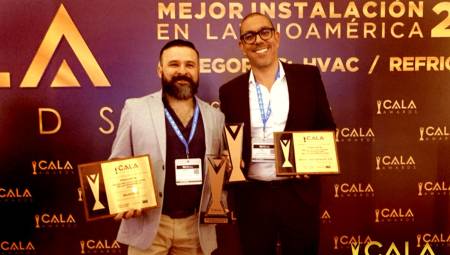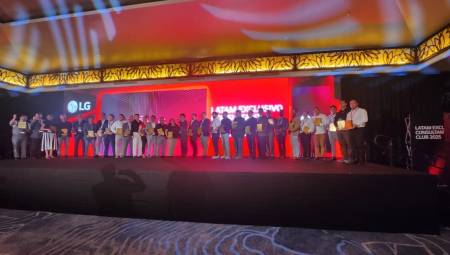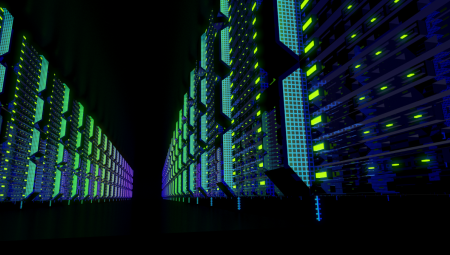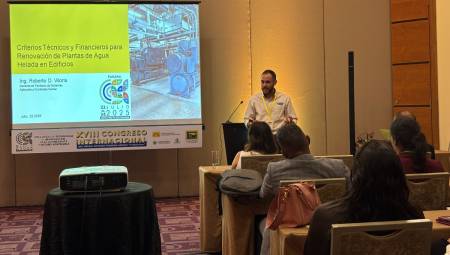International. Over the past 16 years, the thermal design power (TDP) of GPUs has quadrupled. With the growing demand for artificial intelligence, cloud computing, and cryptomining, IDTechEx expects the power consumption of server boards and data centers to continue to increase.
With life starting to return to normal after the end of the Covid pandemic, IDTechEx has seen significant expansion in the data center industry. For example, AMD's Q4 2022 financial statement indicates a 42% year-over-year increase in revenue from its data center segment, indicating rapid market growth.
As the data center industry thrives, the field of data center thermal management is also expected to experience significant growth. IDTechEx forecasts that by 2033, global annual revenue from liquid cooling hardware for data centers will exceed 900 million US dollars, representing a substantial opportunity for enterprises.
IDTechEx has recently released a new report titled "Thermal Management for Data Centers 2023-2033," which covers the adoption of liquid cooling technologies, including direct-to-chip cooling, immersion, single-phase and biphase cooling, refrigerant, regulations, refrigerant distribution units (CDUs), and many other key technologies.
Data center thermal management can be broadly classified into two types depending on the cooling medium: liquid cooling and air cooling. While liquid cooling has gained popularity in recent years, air cooling remains traditional and the most widely used approach, offering several advantages:
* Ease of use: Air cooling solutions are relatively simple to install and operate. They usually involve the use of fans or heat sinks to dissipate heat from components, making them easy to access and easy to use. The familiarity and simplicity of air cooling systems make them convenient for data center operators.

* Established success: Air cooling has a long track record of success in thermal management in data centers. Many data center end users have invested significant resources in building and optimizing air-cooled infrastructure.
* Liquid-free operation: Unlike solutions that rely on refrigerants and liquid circulation, air cooling eliminates the need for liquid-related infrastructure and components. This eliminates risks such as leaks, pump failures or refrigerant evaporation. The absence of liquid in air cooling systems simplifies maintenance and reduces the chances of malfunctions or operational interruptions.
However, despite the benefits of air cooling, its low specific heat capacity limits its effectiveness in meeting the growing cooling demands of modern data centers. To meet this challenge, liquid cooling has become a viable solution. This takes advantage of the greater specific heat capacity of liquids, making them more efficient in heat dissipation. There are two common types of liquid cooling methods: direct-to-chip (cold plate) cooling and immersion cooling.
Cold plate cooling involves mounting a cold plate directly over heat sources such as CPU and GPU with a layer of thermal interface material (TIM) in between. The coolant inside the cold plate chamber absorbs and transfers heat from the components. On the other hand, immersion cooling immerses heat sources in a refrigerant, allowing direct contact and efficient heat dissipation.
Collaboration between server vendors and cold plate manufacturers has accelerated the adoption of cold plate cooling. Integrated solutions (servers with cold plates installed) are offered directly to end users. While direct-to-chip cooling has demonstrated great performance, limited end-user experience integrating cold boards into their standard servers has been a limiting factor in adoption.
An example of such collaboration includes CoolIT Systems' partnership with Intel to develop direct-to-chip cooling solutions designed specifically for Intel Xeon Scalable CPUs. By leveraging collaborations and integrated solutions, end users benefit from cold plate cooling, which includes increased efficiency and lower partial energy use effectiveness (pPUE), without integration complexities.
Another emerging liquid cooling technology is immersion cooling, which offers excellent heat dissipation performance with a pPUE as low as 1.01 demonstrated. However, there are several concerns that have limited the widespread adoption of immersion cooling:
* Complexity: Immersion cooling requires significant modifications to existing server boards. Since servers are immersed directly in liquid coolant, factors such as material compatibility between servers and refrigerant fluids need to be considered, adding complexity and additional costs to the deployment process.
* Lack of experience: Immersion cooling is still in its early stages, and the market lacks the experience and know-how needed to implement and manage this technology.
High upfront and maintenance costs: Retrofitting existing air-cooled data centers to accommodate immersion cooling can be expensive. Immersion cooling also has the highest initial capital expenditure (CAPEX) in terms of cost per watt. In addition, operating and ongoing maintenance costs can also be higher compared to other cooling methods. However, due to efficient heat dissipation, the long-term energy savings make immersion cooling cost-effective for data center users.
Limited demand: While data center power requirements have been increasing, IDTechEx believes that a combination of air cooling and direct-to-chip cooling can adequately meet short- and medium-term cooling demands for major applications. The urgent need for immersion cooling is not currently prevalent in the market.
Author: Yulin Wang, Technology Analyst at IDTechEx.















